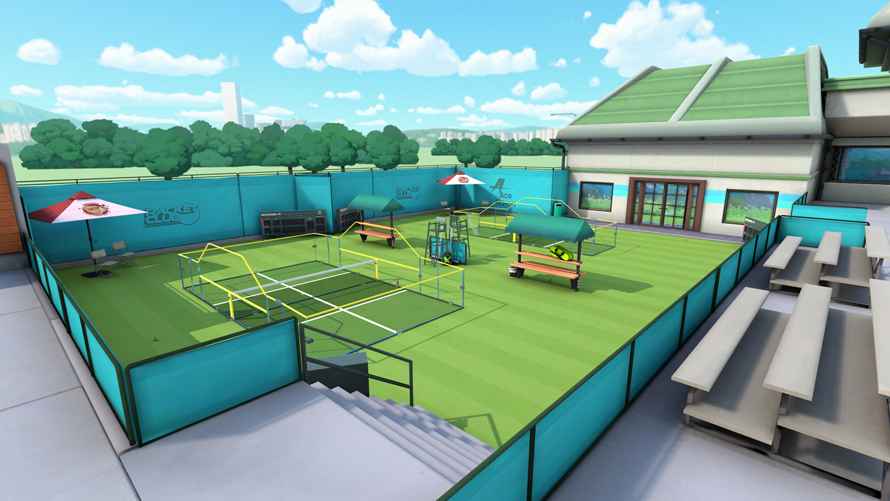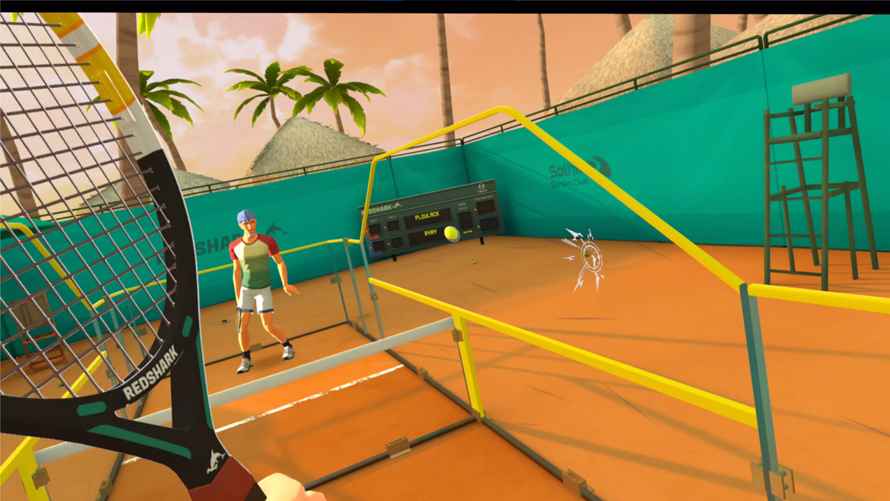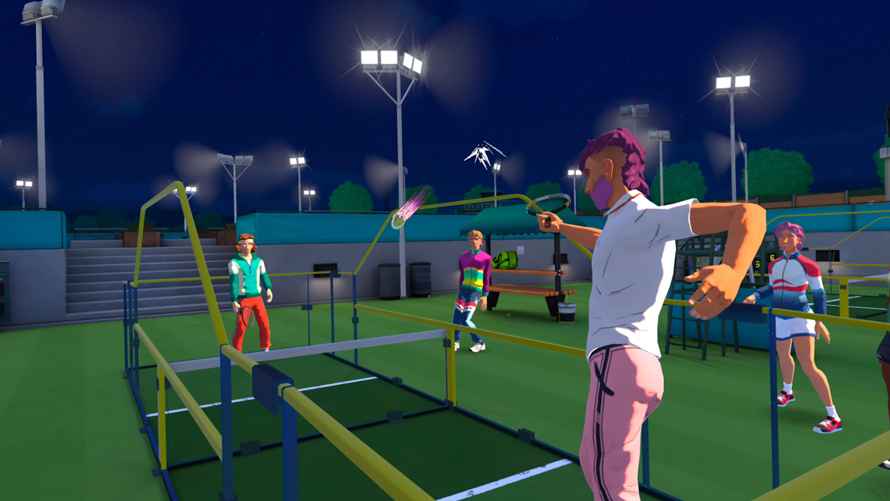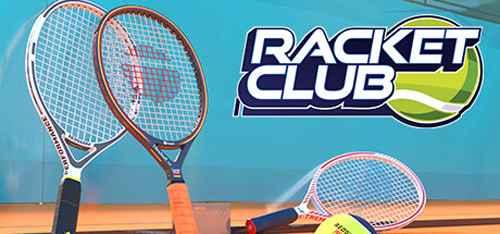The Racket Club Review
Remember when VR was a niche segment of gaming? While VR gaming and hardware might still not be as omnipresent as PCs and consoles, an estimated 23% of US households own a VR device. That’s kind of astounding. VR gaming is a billion-dollar-a-year piece of the video gaming pie, and the vast majority of users are Gen Z and Gen X’ers. A whopping 37% of VR owners have incomes of $100K or more. Even if only a relatively small number of potential users participate in multiplayer games, that’s still a pretty big market. Games like Racket Club are banking on it.
A Whole New Racket
There are many tennis, ping pong, and outright invented racket sports games in the VR space. Some have been around for a long time. Racket Club joins the “invented racket sports” lineup. It doesn’t model an existing real-life sport, but brings together elements from tennis, pickleball, table tennis, and handball or squash. While there is a training mode against bots, Racket Club squarely aims at competition between human players.

Games in Racket Club takes place on small courts framed with transparent walls, allowing players to use bank shots and other tricky moves. Did I say the courts were small? They’re weirdly narrow and a bit claustrophobic. If they were real-life spaces you’d be bruising your teammate with every move. Especially in singles matches, it feels like you’re playing in an aquarium. The racket and ball are borrowed from tennis, but the zone layout of the court derives most closely from pickleball.
Aside from the design of the courts and transparent walls, gameplay and scoring are similar to other racket sports. There is a virtual clubhouse where you can sign up for online matches and tournaments, and outdoor courts for singles and doubles play. You can even spectate other online matches. One cool feature is that the game can also be played in mixed reality mode, so you can have a court plop down in your living room. I’m personally always down for the mixed reality mode in recent VR games.

Follow the Bouncing Ball
As with any virtual sports game, it’s important to really feel like there’s contact between the racket and the ball. This tactile element is not entirely missing in Racket Club, but it’s pretty muted. While I know in my head that I’m not going to actually hit the narrow walls of the court or my fellow players, those small courts really inhibit large, physical gestures. I’m guessing this design encourages close-up, pickleball-like volleys. Controls are simple enough. You pick up the ball with the trigger of one controller and swing your racket with the other.
Racket Club goes for colorful and stylized art that isn’t focused on detail, but it’s inviting enough. Player-created avatars — the character creator tools are a bit limited — are weirdly dead-eyed and not terribly convincing.
Aside from singles and doubles matches with other, online humans, there’s a very rudimentary training mode. It has four levels of challenge.

Simple Fun
To me, the biggest challenge of an invented VR or videogame sport is: do I want to play it in real life? The second challenge is: does it feel like I am playing it in real life? Racket Club scores somewhere in the middle. I’m sure that creating a new racket sport is probably easier than modeling a familiar one. People know what pickleball and tennis play like, after all.
Racket Club offers a pretty spare experience that only really works with a community of online players. The sport itself feels pretty familiar but I wasn’t crazy about the restricted, walled-in court design and lack of single-player options. The game certainly doesn’t make use of PC-VR or the Quest 3’s increased power and fidelity but it’s still a moderately successful iteration of a brand new sport.
***Meta Quest code provided by the publisher for review***
The Good
- Easy to learn racket sport
- Colorful art
- Fun for online players
The Bad
- No single player content
- Uncomfortable court design
- Pretty bare bones in general

